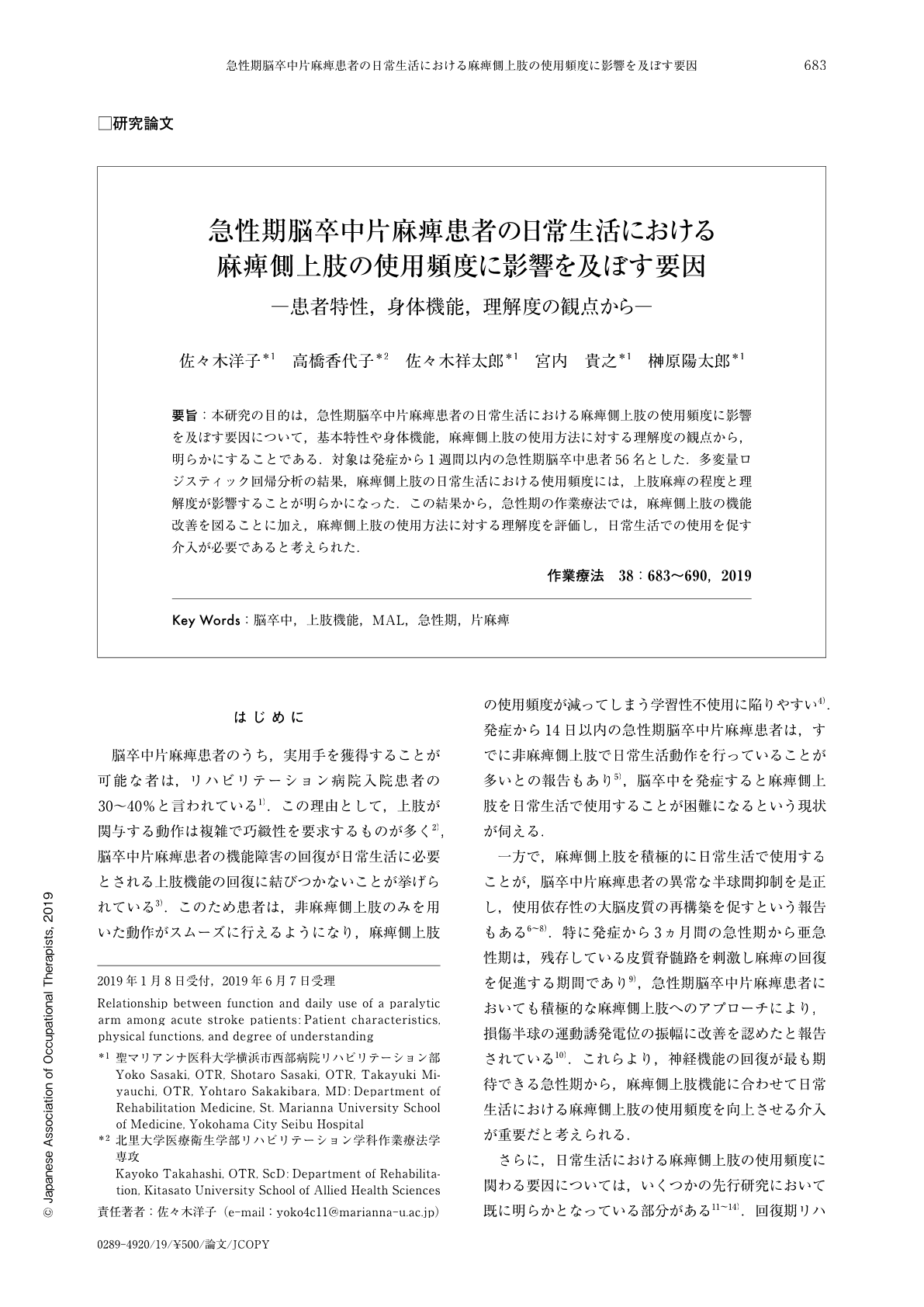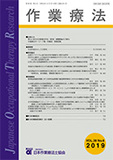Japanese
English
- 販売していません
- Abstract 文献概要
- 1ページ目 Look Inside
- 参考文献 Reference
- サイト内被引用 Cited by
要旨:本研究の目的は,急性期脳卒中片麻痺患者の日常生活における麻痺側上肢の使用頻度に影響を及ぼす要因について,基本特性や身体機能,麻痺側上肢の使用方法に対する理解度の観点から,明らかにすることである.対象は発症から1週間以内の急性期脳卒中患者56名とした.多変量ロジスティック回帰分析の結果,麻痺側上肢の日常生活における使用頻度には,上肢麻痺の程度と理解度が影響することが明らかになった.この結果から,急性期の作業療法では,麻痺側上肢の機能改善を図ることに加え,麻痺側上肢の使用方法に対する理解度を評価し,日常生活での使用を促す介入が必要であると考えられた.
This study aimed to investigate the factors related to the usage of the paralytic arm during daily activities among acute stroke patients. Particularly, we focused on the patient characteristics, physical functions, and the degree of understanding of how to use the affected arm in daily activities. Participants were 56 acute stroke patients within 1 week of onset. Multivariate logistics regression analysis revealed that the amount of hemiplegic arm use was affected by the arm function (FMA score) and the degree of understanding. These results indicate that acute stage occupational therapy intervention should focus on both improving the function of the paralyzed arm, and evaluating and encouraging the patients to better understand how to use the paralyzed arm in the daily activities.

Copyright © 2019, Japanese Association of Occupational Therapists. All rights reserved.


